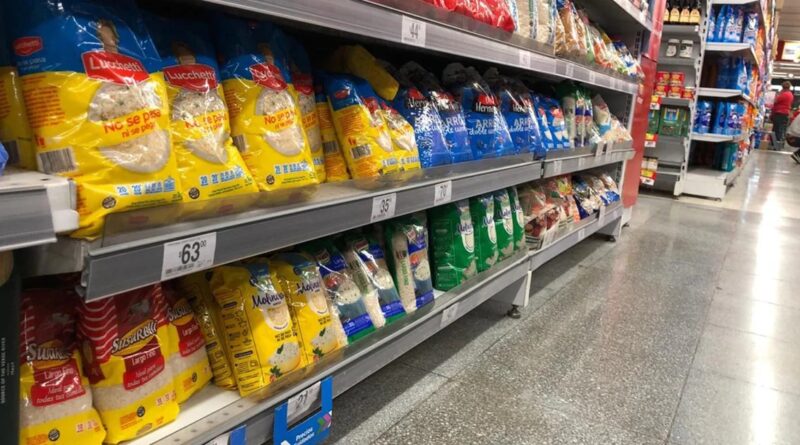Because the price of rice has increased more than 160% in the last year and there are shortages in some stores
After a few months of slowdown, food inflation is again at the center of economic concerns of the government and, above all, households. The category as a whole is accumulating within the year an increase greater than that of general inflation, a dynamic that is expected to strengthen as a result of the increase in the price of meat observed in recent days.
With a wide margin in the category, there are several products that elevate the food basket. However, some stand out not only for the size of the increase over the last year but also for its impact on the “Argentine table”.
It is the case of rice. After sugar, which has tripled in price in the last year, rice is the packaged product with the biggest price increase on supermarket shelves as well as in local shops.
According to the latest INDEC data, the annual increase in the kilo of rice was 162% in Greater Buenos Aires, a percentage that rises to 167% in the suburban neighborhood measurement prepared monthly by the Social Institute (ISEPCI) and in which the prices agreed between suppliers, the marketing chain and the government do not affect. In the past month alone, rice rose by 12.6% according to this survey, which brought its price from $333 to $375 a kilo.
At the same time that rice has been on the list of foods that have been growing the most for a long time, there is much less variety than usual in gondolas and there are shortages even in some classic presentations.
In one of the main rice producing companies, they explained that behind the jump in the price of this basic input of the food basket, a number of factors combine.
On the one hand, increase in the international price of grain that has had an impact since late last year due to increased international demand and disruptions in the supply chain. At the local level, meanwhile, the effect of the drought was fatal. As a consequence of the adverse weather conditions, grain production fell by 25%, making this year one of the worst campaigns for the sector.
“In November last year, a ton of rice for processing cost $40,000. Now, a ton of grain costs $110,000. This increase is passed on to the consumer,” they explained to the food company where they also pointed out that, at current costs, it is cheaper to import rice from Uruguay.
An additional factor that has contributed since April of this year to the strengthening of price growth: rice was included in the various versions of the farm dollarnow equals $340, which means that beyond the specifics of the case, the rise in its price is recorded in the context of the inflationary impact of the recent measures taken by the government to inflow a minimum dollar into the official foreign exchange market.
In this sense, the biggest impact appears in the price of corn, which in turn caused a rise in the price of meat, whose compensation has been stagnant in recent months. As a result of the uptick in the beef market, butchers’ prices are now expected to reflect an increase of up to 20% in the coming days. To make matters worse, prices in Cañuelas continued to rise today, so the final impact on inflation is still uncertain.
The president of the Chamber of Butchers and Suppliers of Argentina (CAMYA), Sergio Pedace, He noted that the jump “is actually a price restructure, because we’re behind. This 20% restructuring is from 2022 and we are still between 40% and 50% behind.”
Continue reading:
#price #rice #increased #year #shortages #stores
